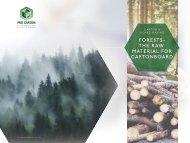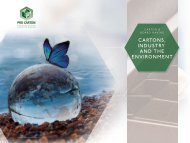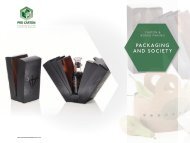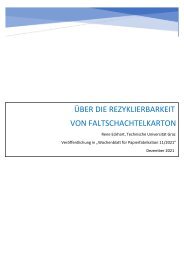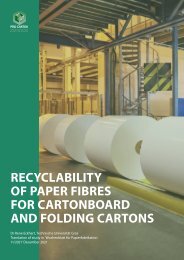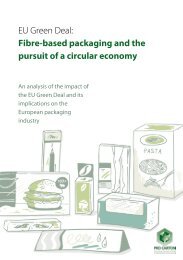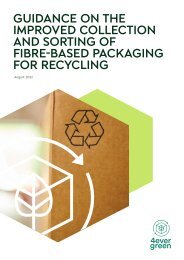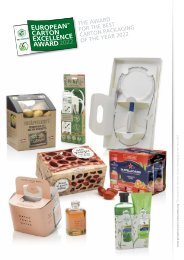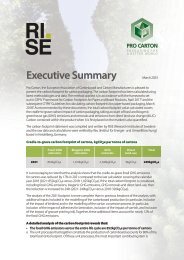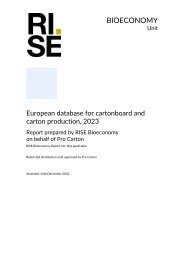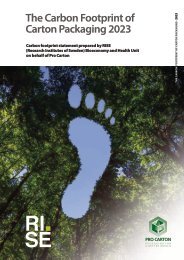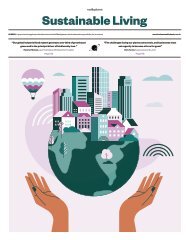Pro Carton Fact File – Module 4 – The Pulping Process
Create successful ePaper yourself
Turn your PDF publications into a flip-book with our unique Google optimized e-Paper software.
WATER USED IN PULPING<br />
CARTON &<br />
BOARD MAKING<br />
Water is used in mechanical and chemical pulping to separate, process and transport primary or virgin fibres, i.e.<br />
fibres made directly from wood. Water is also used in the recycling of fibres from recovered paper and board.<br />
All mills have processes in place to minimise the amount of “lost water”. Water is cleaned and reprocessed in<br />
closed loops before being released back to nature.<br />
THE PULPING<br />
PROCESS<br />
In fact 90% of the water that is taken out at the beginning will be returned to the environment at the end of the<br />
process in a better and cleaner quality than before , with the remainder either being evaporated or remaining within<br />
the product. This is due to the increasing demands on European regulations forcing innovative technologies to be<br />
used in the Mills, (Cepi 2015).<br />
After use the water is treated to meet the local regulations and returned to nature. Action is being taken to moderate<br />
the amount of water used in the manufacturing process to reduce the environmental impact of water use. Cepi has<br />
stated that water consumption in European mills has been reduced by a third in the course of a 10 year survey.<br />
ADVANTAGES OF CARTONBOARD MADE FROM VIRGIN FIBRE<br />
<strong>Carton</strong>board made from primary or virgin fibre is generally whiter, smoother and has a less pronounced surface<br />
structure than cartonboard made mainly from recycled fibres. It can be up to 25% lighter for the same strength and<br />
therefore reduce the overall weight of the carton. Fibres made directly from wood are more “consistent”. This<br />
consistency means that cartonboard made from virgin fibre readily meets the needs of direct food contact and<br />
pharmaceutical packaging and wherever the products packed have sensitive flavours and aromas. One of the most<br />
sensitive products to pack is chocolate. When put in direct contact with packaging made from virgin fibres the pure<br />
taste of the chocolate will be protected.<br />
<strong>Carton</strong>board made from recycled fibre utilises valuable recovered waste paper and board which would otherwise be<br />
discarded into landfill sites or disposed of by other means. Energy and material resources are invested in the<br />
manufacture of paper and board hence recovering and recycling the fibre is therefore an efficient use of those<br />
resources. <strong>Carton</strong>board made mainly from recycled fibres can also be more cost effective as it utilises a lower cost<br />
raw material with the minimum necessary amount of more expensive virgin fibres.<br />
In order to ensure a truly circular and sustainable future for the paper and board industry it is important to continue<br />
to recover as much used fibre as possible and use virgin fibre sustainably to support developments for new and<br />
existing products. To meet varying customer requirements and to keep our circular model running we need both<br />
virgin and recovered fibres. Each post consumer carton collected and recycled will add tremendous value to our<br />
circular business model.<br />
THE CARTON PACKAGING FACT FILE<br />
All contents copyright © BPIF 2017.



